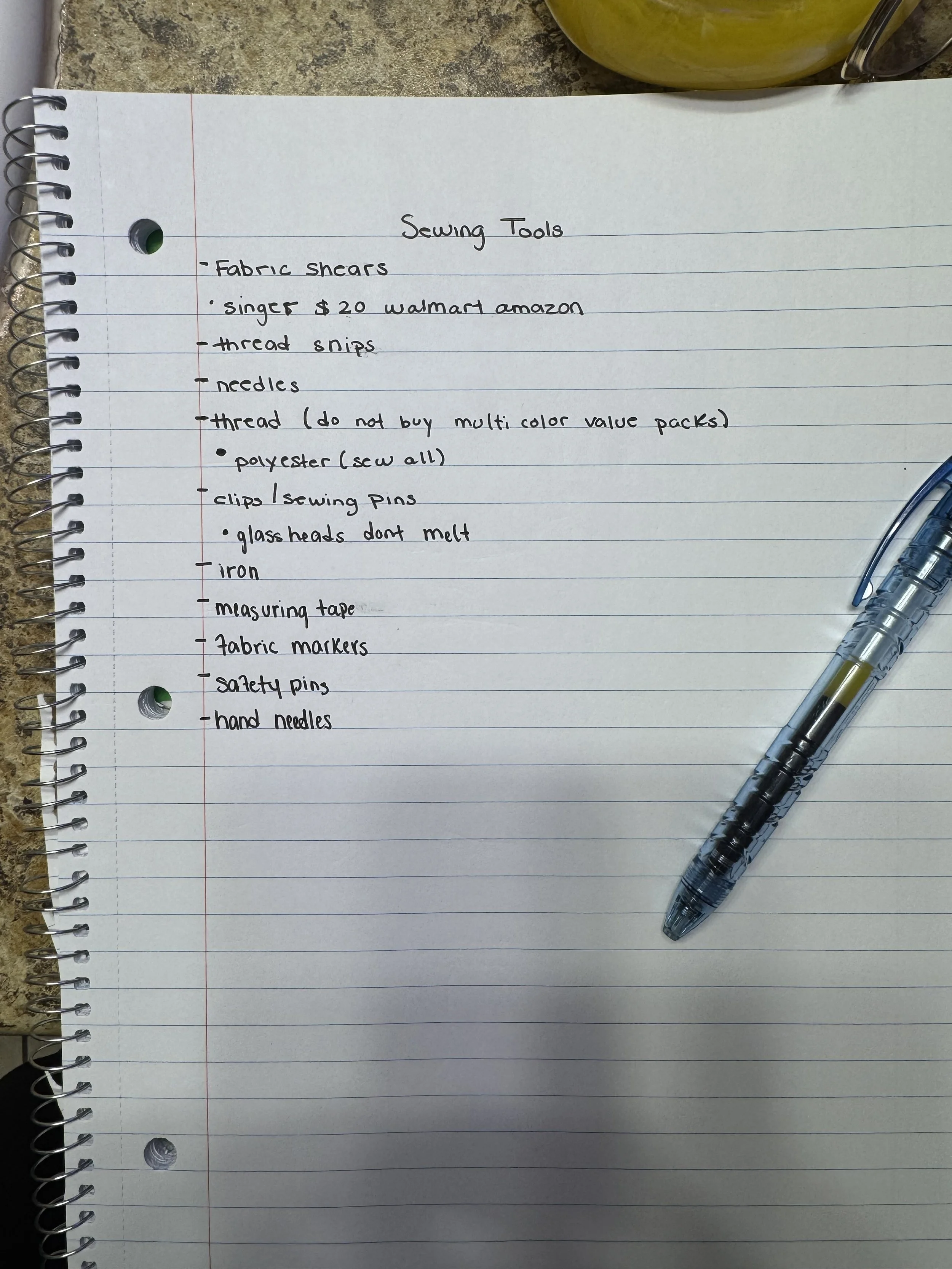Frequently Asked Questions
If you still have questions, take a look at some of the common issues beginners experience below. Feel free to submit any additional questions on our intake form to get personalized answers from our team!
FAQ & Submissions
〰️
FAQ & Submissions 〰️
If you are attempting to wind your bobbin and your thread is tangling on itself. Ensure that you have checked:
* The thread is properly placed in the bobbin winder thread guide
* The bobbin winder spindle (silver rod) is engaged to the bobbin winder stopper (white circular piece).
Here is a video engaging and disengaging the bobbin winder spindle. This is the silver rod being pushed left and right.
*Left- Bobbin winder spindle is NOT ENGAGED, and your thread will not be wound onto your bobbin.
*Right- Bobbin winder spindle is ENGAGED. If the thread is properly guided around the bobbin winder thread guide, you should be able to successfully wind your bobbin.
The components and their locations can vary by machine, so use these fundamentals based on your machine.
FAQ
Q: What is the best sewing machine for beginners?
A: A beginner-friendly sewing machine is one that has simple controls, a variety of built-in stitches, and a lightweight design. Brands like Brother and Singer offer models specifically designed for newcomers.
Q: How can beginners improve their stitching accuracy and tension control?
A: To improve stitching accuracy and tension control, beginners should focus on several key practices:
Use appropriate fabric: Start with cotton or denim, as these fabrics are more forgiving and help you understand stitch mechanics. Avoid slippery or stretchy fabrics until you gain more confidence.
Choose the right needle: Select a needle that matches your fabric type. A universal needle works well for woven fabrics, while a ballpoint needle is better for knits.
Adjust tension settings: Get familiar with your sewing machine's tension settings. Test stitch on scrap fabric to ensure balanced tension, adjusting as necessary for different materials.
Practice consistent seam allowances: Use a guide on your sewing machine or mark guidelines on your fabric. Maintaining a consistent seam allowance will enhance accuracy.
Stitch slowly and steadily: Take your time as you sew, especially on curves or corners. A slower pace allows you to maintain better control and accuracy.
Press as you sew: Regularly pressing seams helps to shape and set stitches. It also allows you to catch any tension issues before proceeding further.
Check your machine regularly: Keeping your sewing machine clean and properly lubricated can prevent skipped stitches and tension problems.
Q: What basic tools do I need for sewing?
A: Essential tools include scissors, pins, a seam ripper, measuring tape, and a rotary cutter. As you advance, you may also want to add a cutting mat, tailor's chalk, and a ruler.
The bobbin winder thread guide has a small disc installed. The disc holds your thread and is how the tension is created. Ensure the thread is inserted below the tension disc when winding the bobbin.
Q: What is a sewing pattern?
A: A sewing pattern is a template that shows how to cut fabric pieces to construct a garment or item. Patterns can be purchased or made from scratch.
Q: How do I take my measurements for a pattern?
A: Use a flexible measuring tape to measure your bust, waist, hips, and inseam. It's best to measure yourself wearing fitted clothing and to ask someone for help for accuracy.
Q: Can I modify a commercial pattern?
A: Yes, modifying a commercial pattern is common. You can add or subtract ease, change the length, or adjust the neckline to better suit your style or body shape.
Learning a new skill is a journey. Everyone starts from somewhere!
When upcycling try to sketch out your ideas to help bring them to life. Get a general understanding of what shapes you will need and how much material your project will require.
Remember, don’t be afraid to make mistakes. You are here to learn! No better way to learn than by correcting mistakes and understanding what to do better for the next time.
Your setup should look like this when winding the bobbin.
*Thread is underneath the disc in the bobbin winding guide.
*The bobbin winder spindle is engaged to the bobbin winder stopper.
Once the bobbin is full disengage the bobbin winder spindle (by pushing it back to the left).
If you are working on smaller projects, you can fill the bobbin to your desired state.
We want to hear from you!
Submit your individual experiences, questions, tips, or any feedback on the form below. We would like to build a community of sewers and provide knowledge of the skill.
Q: How do I care for different types of fabric?
A: Always check the fabric's care label. Generally, natural fibers like cotton should be washed on gentle cycles and air-dried, while synthetic fabrics may be machine washable but may require low heat for drying.
Q: What is the difference between woven and knit fabric?
A: Woven fabric is made from threads that cross each other at right angles, creating a firm structure. Knit fabric is made by interlooping yarn, allowing it to stretch. Consider the fabric type based on the desired fit and drape of your project.
Q: How can I prevent fabric from fraying?
A: You can use techniques such as zigzag stitching along the raw edges, applying fray check, or finishing seams with a serger. Choosing fabrics with a tighter weave also helps reduce fraying.
Q: What’s the best way to store fabric?
A: Store fabric in a cool, dry place, folded neatly or on shelving. Keep it away from direct sunlight to prevent fading and avoid stacking heavy items on top to prevent creasing.
First project madness!! It looks OK from afar, but close up there are many beginner defects.





